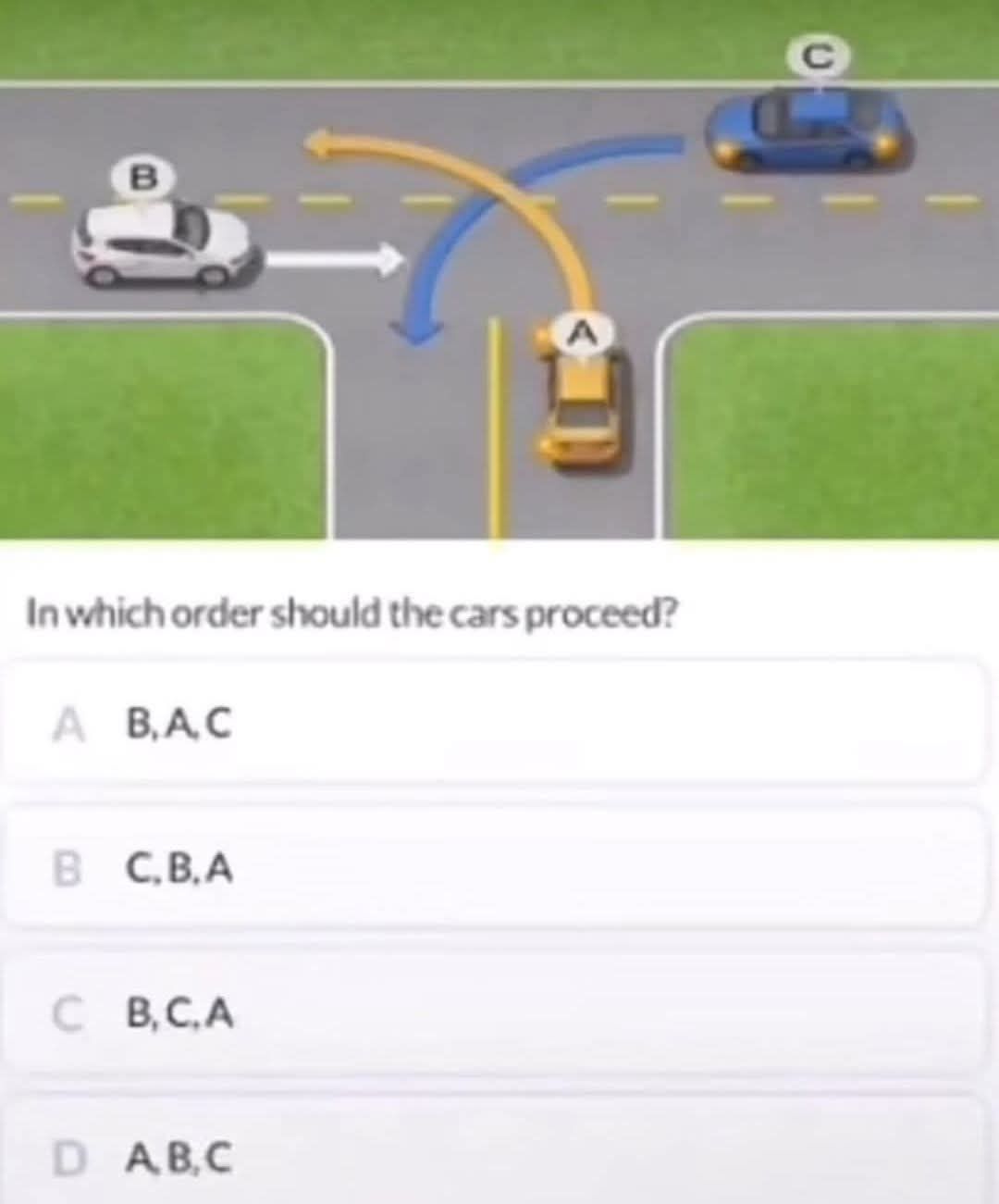Traffic rules exist to keep drivers, passengers, and pedestrians safe, but sometimes even the most basic intersections can lead to confusion. One viral traffic puzzle has been making the rounds online, and it’s leaving people of all driving experience levels stumped. The scenario is simple but thought-provoking, and it brings attention to how well we really understand the rules of the road. If you’ve ever pulled up to an intersection and hesitated about who has the right of way, this puzzle is the perfect refresher.

In this case, you’re looking at a three-way intersection with three vehicles and no traffic signals or stop signs—just a plain intersection. Car A (yellow) wants to turn left, Car B (white) wants to go straight, and Car C (blue) also plans to turn left. The puzzle asks you to determine which car should go first and in what sequence the others should proceed. The possible answers are A) B, A, C; B) C, B, A; C) B, C, A; and D) A, B, C. To find the correct answer, we need to lean on standard U.S. traffic rules.
First, any vehicle going straight has the right of way over those that are making a left turn. This means that Car B already holds the highest priority in this situation. Second, a vehicle turning left must always yield to oncoming traffic that is traveling straight, which applies directly to Car A, who is attempting to turn left across Car B’s path. Third, if two cars are turning left from opposite directions and their paths don’t cross, they can typically turn at the same time. However, in this particular setup, their timing and sequence still matter.
Let’s analyze the puzzle step by step. Car B, the white car going straight, has the least complicated move and the highest priority under right-of-way rules. It’s not turning and it’s not conflicting with any other path—so it goes first. Once Car B has cleared the intersection, Car A can then safely turn left without crossing B’s path. Car C is also making a left turn, but its move would place it in the street that Car A is just exiting. Although their paths don’t directly interfere, Car C must wait until both Car B and Car A have cleared the way. As a result, Car C is the last to proceed. Putting this all together, the correct order is B, A, C—making option A the right answer.
Many people get tripped up by this puzzle because they assume that all left turns are treated equally, or they overlook how turning left toward different directions doesn’t necessarily lead to a collision. But understanding how to analyze the flow of traffic is essential. The idea is not just about who wants to go where, but whether one vehicle’s path directly interferes with another’s. If it does, then yielding becomes necessary. If it doesn’t, it may proceed—just with the right timing. This puzzle is a good reminder that real-world driving situations often rely on split-second decisions that are rooted in rules most of us learned long ago but may not always recall. By brushing up on right-of-way logic, we can avoid hesitation, confusion, or even accidents at intersections. In summary, here’s what you need to remember: cars going straight always have priority over those turning left; cars making left turns must yield to oncoming traffic going straight; and when two cars are turning left from opposite sides and their paths don’t intersect, they can go at the same time—provided it’s safe. These simple but powerful rules are what keep traffic flowing safely, especially in situations where signage is absent. So the next time you find yourself in a similar real-life scenario, just think back to this puzzle. You’ll know exactly who goes first—and you’ll drive through with confidence.





